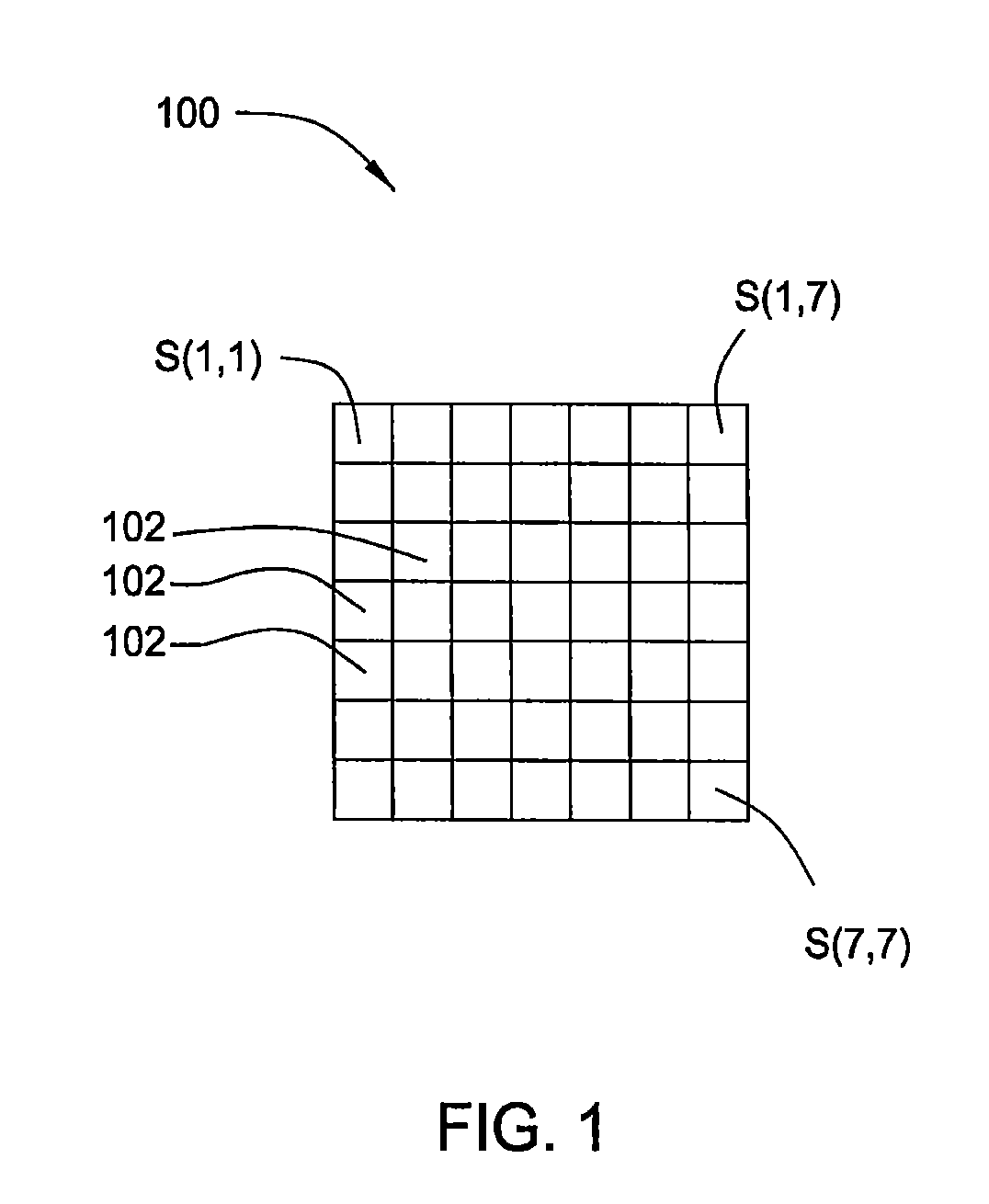Spatially offset multi-imager-panel architecture for projecting an image
a multi-imager and image technology, applied in the field of display systems, can solve the problems of non-linear increase of the cost of a spatial light modulator, a limiting factor in the cost-effective production of such systems, and the significant cost of digital projection systems such as dmd panels
- Summary
- Abstract
- Description
- Claims
- Application Information
AI Technical Summary
Problems solved by technology
Method used
Image
Examples
Embodiment Construction
[0026] Embodiments of the invention contemplate methods and apparatus for providing a high-resolution image using multiple spatially offset lower-resolution spatial light modulators, such as DMD, LCOS, or HTPS. Multiple lower-resolution signals, or subframe signals, are generated from a high-resolution image signal using a resolution reduction and interpolation algorithm. The resolution reduction and interpolation algorithm defines each subframe signal from the high-resolution image signal so that the pixels of each subframe signal are spatially offset from the pixels of the other subframes a desired offset distance. In one embodiment, a digital overlay approach is used, in which the offset distance is equal to a fraction of the width of a single pixel. In another embodiment, an in-engine tiling approach is used, in which the offset distance is equal to a fraction of the width of the entire image so that the subframe images are positioned side-by-side.
[0027] In the overlay approach...
PUM
 Login to View More
Login to View More Abstract
Description
Claims
Application Information
 Login to View More
Login to View More - R&D
- Intellectual Property
- Life Sciences
- Materials
- Tech Scout
- Unparalleled Data Quality
- Higher Quality Content
- 60% Fewer Hallucinations
Browse by: Latest US Patents, China's latest patents, Technical Efficacy Thesaurus, Application Domain, Technology Topic, Popular Technical Reports.
© 2025 PatSnap. All rights reserved.Legal|Privacy policy|Modern Slavery Act Transparency Statement|Sitemap|About US| Contact US: help@patsnap.com



